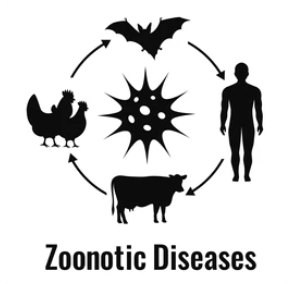The world health organization (WHO) estimates that zoonotic diseases account for billions of illnesses globally every year. In countries with high level infrastructure these diseases are rarer, but still a risk, especially for those in select professions (biologists, veterinarians, wildlife rehabilitators,etc.) or the immunocompromised.
Those outside of these groups may contract these illnesses when exposed to pets or random encounters with wildlife. It is thus important to know some basics about these pathogens so that you can prevent exposure and seek appropriate guidance if you are concerned.
What is a zoonotic disease?
- A zoonotic disease, or zoonoses, is a disease that can be passed between an animal and a human.
What kind of diseases are zoonotic?
- Zoonotic diseases are generally viral or bacterial, although there are other pathogens that may be considered zoonotic. Common diseases we hear about in the news include coronaviruses, salmonella and rabies. Other diseases include things such as West Nile virus, avian influenza (Bird flu), and Yersinia pestis (plague).
What animals carry zoonotic diseases?
- All animals have the ability to carry zoonotic diseases, including domestic animals or exotic pets. In many cases animals may be able to pass on an illness, even if they are not ill themselves.
What can I do to prevent becoming ill with a zoonotic disease?
- Wash your hands regularly
- Ensure your pets see their vet regularly for check ups and vaccinations
- Don’t engage with wildlife, especially if it appears ill.
- If you find a wild animal in distress call a wildlife rehabilitator for instructions on what to do. Don’t handle a wild animal unless you are instructed to by a trained professional.
- If you find an animal carcass on your property and need to remove it, avoid direct contact. A shovel should suffice for most situations. If you must have contact, wear gloves, and preferably a mask while disposing of the carcass. Once done, remove your gloves and wash your hands thoroughly.
- If you think you have been exposed to a zoonotic disease contact your personal physician immediately!
What can I do to prevent my child from becoming ill with a zoonotic disease?
- Teach children not to approach wild animals, but to quietly observe them from a distance.
- Look, but don’t touch.
- Teach good hand washing skills and enforce them.
- Have a plan
- Let your child know that you know what to do if they find an animal in distress. Explain to them what a wildlife rehabilitator does and let them know the steps you will take if an issue arises.
- If you think your child may have been exposed to a zoonotic disease do not wait, contact their personal physician immediately!
- If your child is unable to communicate and is found in an enclosed area with a wild mammal contact their personal physician immediately!
Facilities/PPE
Knowledge is power! Being aware of zoonotic diseases, knowing how to interact with wildlife appropriately, and practicing good hygiene eliminates the majority of threats. If you work in an industry that has a higher likelihood of exposure to zoonotic disease go to the USGS website and download this medical alert card.
https://www.cdc.gov/onehealth/basics/zoonotic-diseases.html
World Health Organization
Looking for more information on zoonotic diseases?
Check out the following links:
Centers for Disease Control and Prevention
https://www.cdc.gov/onehealth/basics/zoonotic-diseases.html
World Health Organization
https://www.who.int/news-room/fact-sheets/detail/zoonoses
World Organization for Animal Health https://www.woah.org/en/what-we-do/global-initiatives/one-health/







Leave a Reply
You must be logged in to post a comment.